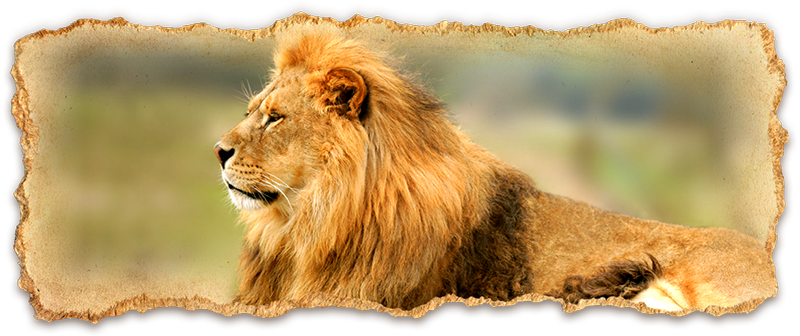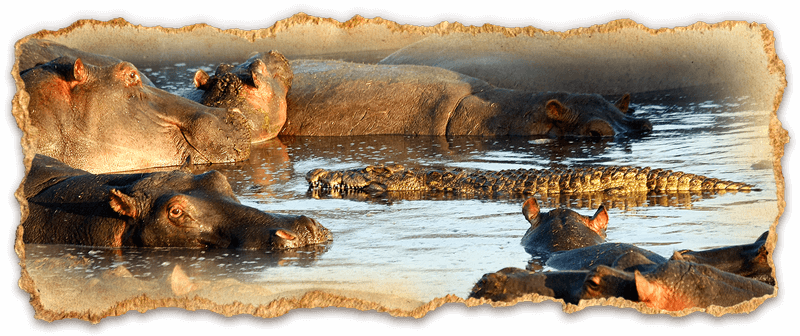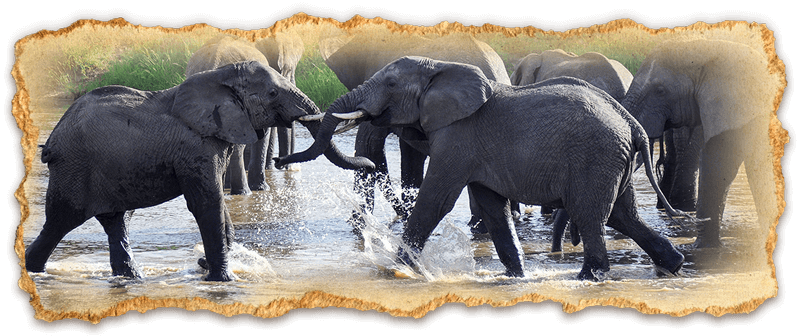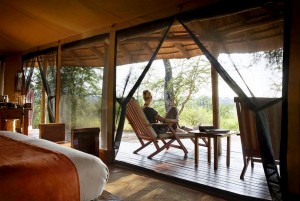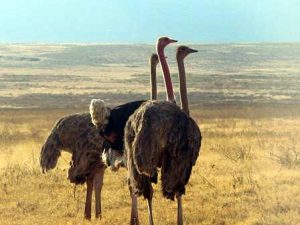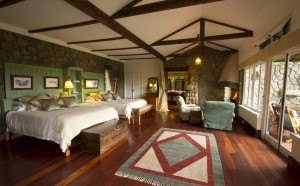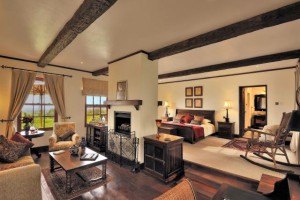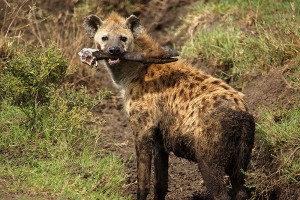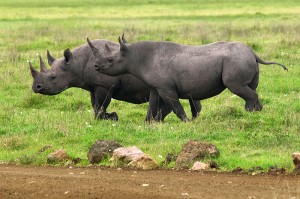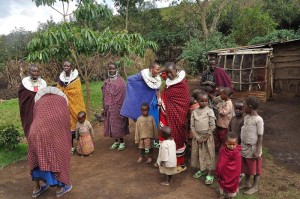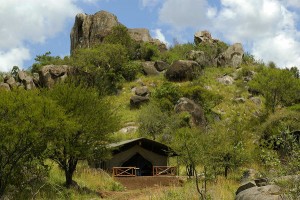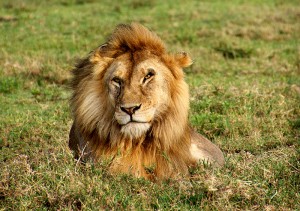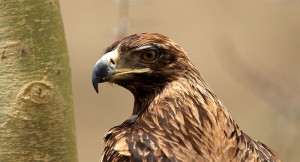Tented Camps Escape
~ Ultra Luxury ~
~ Ultra Luxury ~
The best season for this departure is June—October
Safari Overview
With top-notch ultra-luxury accommodations, our Tented Camps Safari is the perfect opportunity to discover Northern Tanzania Parks and destinations. Capture the landing-places of Tarangire National Park, Lake Manyara, Olduvai Gorge, Ngorongoro Crater, and the vast Serengeti Plains.
12 days
11 nights
- Safari Highlights:
- Enjoy the mixture of top-notch, ultra luxury Tented Camps and Lodges.
- When visiting during July—October, see an excellent concentration of Elephants in Tarangire National Park.
- When visiting in June, see the Wildebeest Migration in Central and Western Serengeti.
- Participate on Village Walk, School Visit and Farmers Market.
- The abundance and diversity of wildlife including the rare Black Rhino in Ngorongoro Crater.
- Enjoy two nights at the heart of Serengeti, which is home to the big cats such as Lions and Leopards.
- Explore the Western Serengeti (with two nights), which is home to the Giant Crocodiles and Big School of Hippos found in River Grumeti.
- Capture the beautiful landscape and scenery from a birds-eye view while flying over the Serengeti Plains and Ngorongoro Highland, on your return flight back to Arusha.
Itinerary
Ultra Luxury Tented Camps Safari: Discover Northern Tanzania
Day 1
Arrive in Arusha, Tanzania
Arrive at Kilimanjaro International Airport (JRO) by your international flight. Your driver guide will meet you at you at the airport and drive you to Arusha Coffee Lodge (or similar) for overnight.
About Arusha Coffee Lodge
Day 2
Nature Walk and Night Game Drive
Drive to Oliver’s Camp (or similar) in Tarangire for Lunch. Afternoon Nature Walk, followed by an early Dinner and Night Game Drive. Dinner and overnight at Oliver’s Camp (or similar).
About Oliver’s Camp
Day 3
A Game Drive Day
Full-day Game Drive in Tarangire National Park with picnic Lunch. Dinner and overnight at Oliver’s Camp (or similar).
About Tarangire National Park
Day 4
Lake Manyara National Park
Drive to Escarpment Lodge for Lunch. Afternoon Game Drive in Lake Manyara National Park. Dinner and overnight at Escarpment Lodge (or similar).
About Lake Manyara National Park
About Escarpment Lodge
Day 5
AM Game Drive and a Leisurely Afternoon
Early morning Game Drive in Lake Manyara National Park. Return to your lodge for Lunch. Afternoon at Leisure or optional Nature Walk. Dinner and overnight at Escarpment Lodge (or similar).
Day 6
Discover Local Culture
After breakfast, drive to a local village for a Village Walk and School Visit. Lunch will be at Gibbs Farm. Afternoon Home Visit. Dinner and overnight at The Manor at Ngorongoro (or similar).
About Local Culture
About Gibbs Farm
About The Manor at Ngorongoro
Day 7
Game Drives in the Crater
Full day tour in Ngorongoro Crater with picnic Lunch. Dinner and overnight at The Manor at Ngorongoro (or similar).
About Ngorongoro Crater
Day 8
Olduvai Gorge Museum and Maasai Village
Drive to Serengeti National Park, en route, visit Olduvai Gorge Museum and Maasai Village. Afternoon, enjoy picnic Lunch then continue to your camp, doing Game Drive on the way. Overnight at Mbuzi Mawe Serena Tented Camp (or similar).
About Olduvai Gorge Museum
About Maasai Village
About Mbuzi Mawe Serena Tented Camp
Day 9
Game Drives in the Serengeti Plains
A full-day Game Drive in Serengeti National Park. Overnight at Mbuzi Mawe Luxury Tented Camp (or similar).
About Serengeti National Park
Day 10
Journey to the West
Game Drive to Western Serengeti, Lunch at Kirawira Luxury Tented Camp. Afternoon Game Drive in the West. Overnight at Kirawira Luxury Tented Camp (or similar).
About Kirawira Luxury Tented Camp
Day 11
The Western Serengeti
Morning and afternoon Game Drive in Western Serengeti (option of visiting Lake Victoria for a small extra charge). Dinner and overnight at Kirawira Luxury Tented Camp (or similar).
About Lake Victoria
Day 12
Return Flight to Arusha
After Breakfast, enjoy a birds-eye view flight over the Serengeti Plains and Ngorongoro Highland, en route back to Arusha. Lunch and day room will be at Arusha Coffee Lodge. In the evening, transfer to Kilimanjaro International Airport (JRO) for your international flight back home.
- Inclusions:
- Respective accommodation or similar throughout as indicated.
- All meals on main tour as shown.
- All game drives with photographic roof hatch land cruiser driven by a professional driver guide.
- All transfers as per the itinerary.
- Complimentary bottled, water, soft drinks, beer and house wine during game drives.
- All national park entry fees and Olduvai Gorge Museum entry fee.
- Tips to porters and waiters.
- Visit to Maasai Village.
- Naturalist guide.
- Exclusions:
- Entry VISA and Local airport tax.
- Personal and baggage insurance.
- Excess baggage charges levied by airline.
- Meals and beverages other than specified.
- Tips to your naturalist guide and driver guide.
- Cost for anything not mentioned on the list above.
Accommodations
Our Tented Camps Safari Features Top-Notch, Ultra-Luxury Accommodations
Arusha Coffee Lodge - Arusha
Lying on the gentling rolling foothills that cascade down from the ever-present Mount Meru is the bustling and vibrant town of Arusha. It is here on the outskirts of this town, hidden amongst one of Tanzania’s largest coffee plantations, that you will find Arusha Coffee Lodge, a perfect haven for relaxation either before or after any African safari. Comprising of 30 Plantation Houses – inclusive of 12 Plantation Suites – that radiate out into the evergreen coffee fields, Arusha Coffee Lodge has been designed around the original landowner’s home that dates back to the early 1900’s. [learn more]
Oliver’s Camp - Tarangire National Park
Established by pioneer Paul Oliver in 1992, Oliver's Camp is for safari enthusiasts wanting more than the postcard-snaps of the Big Five. Set in the secluded Tarangire National Park, it’s a camp that celebrates back-to-basics luxury in one of the most uncrowded corners of East Africa. It’s for those who want to feel the dust of Africa beneath their boots on a walking safari, drink in the cool moist air of a night drive, and have the scent of warm rain on hot earth fill their nostrils. This is Africa, untamed... just as it should be. [learn more]
Escarpment Lodge - Manyara National Park
The Escarpment Lodge invites the incredible beauty of the African bush through expanses of windows and doors. Nature encompasses you while delighting in the comfort and luxury of the superbly appointed bar lounge. A spreading deck surrounding the main lodge affords you breathtaking views of the lake and the gorge upon which the lodge perches. Watch pelicans brush the skies as you take sundowners. See the sun slip like a segment of orange into the hills and listen to the sounds of Africa nestle up to you as night slides in. [learn more]
The Manor at Ngorongoro - Ngorongoro
Crossing the Rift Valley and climbing the steppe onto the green and rolling hills south of the Ngorongoro Crater, there lies a truly undeniable surprise and one that will be a home-away-from-home. The Manor at Ngorongoro, located in the north west Tanzania and with its 10 luxurious cottages (20 Suites) and magnificent main Manor House, is one of the first safari lodges of its kind to blend East African hospitality with old-world Afro-European architecture and decor. Located adjacent to the famous Ngorongoro conservation area and within a 1500-acre Arabica coffee estate, The Manor is reminiscent of an elegant up-country farm home in the Cape Dutch-style of architecture. [learn more]
Mbuzi Mawe Serena Tented Camp - Serengeti National Park
Scenically located in a glade, known as ‘the place of the klipspringer' (mbuzi mawe), and guarded by three million year-old granite towers, this luxury tented-camp in the Serengeti is unique. Cleverly located on one of the main annual migration corridors for over one million wildebeest, half a million zebras and gazelles, and their accompanying cast of predators it is also located at the very epicentre of one of the world's most famous national parks. [learn more]
Kirawira Serena Camp - Serengeti National Park
Ideally located on a hill of the famous Western Corridor with sweeping views of the Serengeti National Park. Accommodations include 25 elegant and spacious luxury tents raised on timber platforms, en-suite hot showers and toilets, with a large private deck/verandahs. Speke Bay activities include lake cruises, bird walks, canoe trips on Lake Victoria, and mountain bike trips. [learn more]
Lying on the gentling rolling foothills that cascade down from the ever-present Mount Meru is the bustling and vibrant town of Arusha. It is here on the outskirts of this town, hidden amongst one of Tanzania’s largest coffee plantations, that you will find Arusha Coffee Lodge, a perfect haven for relaxation either before or after any African safari. Comprising of 30 Plantation Houses – inclusive of 12 Plantation Suites – that radiate out into the evergreen coffee fields, Arusha Coffee Lodge has been designed around the original landowner’s home that dates back to the early 1900’s. [learn more]
Oliver’s Camp - Tarangire National Park
Established by pioneer Paul Oliver in 1992, Oliver's Camp is for safari enthusiasts wanting more than the postcard-snaps of the Big Five. Set in the secluded Tarangire National Park, it’s a camp that celebrates back-to-basics luxury in one of the most uncrowded corners of East Africa. It’s for those who want to feel the dust of Africa beneath their boots on a walking safari, drink in the cool moist air of a night drive, and have the scent of warm rain on hot earth fill their nostrils. This is Africa, untamed... just as it should be. [learn more]
Escarpment Lodge - Manyara National Park
The Escarpment Lodge invites the incredible beauty of the African bush through expanses of windows and doors. Nature encompasses you while delighting in the comfort and luxury of the superbly appointed bar lounge. A spreading deck surrounding the main lodge affords you breathtaking views of the lake and the gorge upon which the lodge perches. Watch pelicans brush the skies as you take sundowners. See the sun slip like a segment of orange into the hills and listen to the sounds of Africa nestle up to you as night slides in. [learn more]
The Manor at Ngorongoro - Ngorongoro
Crossing the Rift Valley and climbing the steppe onto the green and rolling hills south of the Ngorongoro Crater, there lies a truly undeniable surprise and one that will be a home-away-from-home. The Manor at Ngorongoro, located in the north west Tanzania and with its 10 luxurious cottages (20 Suites) and magnificent main Manor House, is one of the first safari lodges of its kind to blend East African hospitality with old-world Afro-European architecture and decor. Located adjacent to the famous Ngorongoro conservation area and within a 1500-acre Arabica coffee estate, The Manor is reminiscent of an elegant up-country farm home in the Cape Dutch-style of architecture. [learn more]
Mbuzi Mawe Serena Tented Camp - Serengeti National Park
Scenically located in a glade, known as ‘the place of the klipspringer' (mbuzi mawe), and guarded by three million year-old granite towers, this luxury tented-camp in the Serengeti is unique. Cleverly located on one of the main annual migration corridors for over one million wildebeest, half a million zebras and gazelles, and their accompanying cast of predators it is also located at the very epicentre of one of the world's most famous national parks. [learn more]
Kirawira Serena Camp - Serengeti National Park
Ideally located on a hill of the famous Western Corridor with sweeping views of the Serengeti National Park. Accommodations include 25 elegant and spacious luxury tents raised on timber platforms, en-suite hot showers and toilets, with a large private deck/verandahs. Speke Bay activities include lake cruises, bird walks, canoe trips on Lake Victoria, and mountain bike trips. [learn more]
Destinations
Discover the World's Abundant Wildlife in Northern Tanzania
Tarangire National Park
Herds of up to 300 elephants scratch the dry river bed for underground streams, while migratory wildebeest, zebra, buffalo, impala, gazelle, hartebeest and eland crowd the shrinking lagoons. It’s the greatest concentration of wildlife outside the Serengeti ecosystem – a buffet for predators. The swamps, tinged green year round, are the focus for 550 bird varieties, the most breeding species in one habitat anywhere in the world.
The compact game –viewing circuit through Manyara offers a virtual microcosm of the Tanzanian safari experience. From the entrance gate, the road winds through an expanse of lush jungle like groundwater forest where hundred-strong baboon troops lounge nonchalantly along the roadside, Blue monkeys scamper nimbly between the ancient Mahogany trees, dainty Bushbuck tread warily through the shadows, and outsized forest hornbills honk in the high canopy.
Contrasting with the intimacy of the forest is the grassy floodplain and its expansive views eastward across the Alkakine Lake. Large buffalo, wildebeest and zebra herds congregate on these grassy plains, as do giraffes some so dark in coloration that they appear to be black from a distance.
Manyara provides the perfect introduction to Tanzania’s birdlife. More than 400 species have been recorded, and even a first-time visitor to Africa might reasonably expect to observe 100 of these in one day. Highlights include thousands of pink-hued flamingos on their perpetual migration, as well as other large waterbirds such as pelicans, cormorants and storks.
The village walk enables travelers to experience some local culture, people life and their respective activities. This may include visiting a School, Hospital, local Brick Making Centre, a Church, and more.
Ngorongoro Crater
The Ngorongoro Crater is only 3% of the total area of Ngorongoro Conservation Area (NCA), but it is home to more than 75% of all the game animals found in NCA. Technically known as a caldera, Ngorongoro crater is the largest unflooded and unbroken caldera in the world with 19.2 km in diameter, 2000 feet deep, and 102 sq miles in area. The rich pasture and permanent water of the crater floor supports a large resident population of wildlife of up to 25,000 predominantly grazing animals. These include wildebeest, zebra, buffalo, kongoni, gazelle, warthog and eland. The swamps and forest provide additional resources for hippo, elephant, waterbuck, reedbuck, and bushbuck, baboons and Vervet monkeys. The steep inner slopes provide habitat for dik-dik and the rare Mountain reedbuck.
Jackals thrive in the crater and bat-eared foxes live in the short grass area. Predatory animals such as lion, leopard, cheetah and serval cats live off the abundant wildlife; and large packs of hyenas roam the crater, making their own kills and scavenging from others. The crater is a dynamic and constantly changing ecosystem and the numbers and proportion of some animals including lions and Black rhinos have fluctuated considerably over the past 30 years. Thanks to anti-poaching patrols in the crater and the whole ecosystem, the Black rhino population is coming back. Ngorongoro crater is one of the few places in East Africa where visitors can see a rhino. [learn more]
Laetoli and Olduvai Gorge Museum
Laetoli is found west of Ngorongoro Crater. It is here where hominid footprints are preserved in volcanic rock 3.6 million years old and represent some of the earliest signs of mankind in the world. Excavation, mainly by the archaeologists Louis and Mary Leakey, yielded four different kinds of hominid, showing a gradual increase in brain size and in the complexity of their stone tools. The first skull of Zinjanthropus, commonly known as the "Nutcracker Man”, who lived about 1.75 million years ago was found here. [learn more]
Maasai Village
The traditional Maasai Village is called a Manyata. This is where different Maasai families live with their livestock. The Livestock live in the middle of thick Acacia thorny fences that protect them from any possible predator attacks. The visit to these villages give guests an opportunity to learn the lifestyle of Maasai people including their culture and tradition. [learn more]
Serengeti National Park
Tanzania’s oldest and most popular national park, also a World Heritage Site and also proclaimed a Worldwide Wonder, the Serengeti is famed for its annual migration, when some two million hooves pound the open plains, as more than 200,000 zebra and 300,000 Thomson’s gazelle join the wildebeest’s trek for fresh grazing. Yet even when the migration is quiet, the Serengeti offers arguably the most scintillating game-viewing in Africa: great herds of buffalo, smaller groups of elephant and giraffes, and hundreds upon hundreds of eland, topi, kongoni, impala and Grant's gazelle.
The spectacle of predators versus prey dominates Tanzania's greatest park. Golden–mained lion prides feast on the abundance of plain grazers. Solitary leopards haunt the Acacia trees lining the Seronera River, while high densities of cheetahs prowling the southeastern plains. Almost uniquely, all three African jackal species occur here, alongside the Spotted hyena and a host of more elusive small predators, ranging from the insectivorous aardwolf to the beautiful serval cat.
But there is more to Serengeti than large mammals. 500–plus bird species, ranging from the outsized ostrich and bizarre secretary bird of the open grass-land, to the Black eagles that soar effortlessly above the Lobo Hills.
Lake Victoria is the largest lake in Africa and the second largest freshwater lake in the world. It is a spectacular place for our guests to experience a local fishing village as well as enjoy an hour of canoeing. [learn more]
Herds of up to 300 elephants scratch the dry river bed for underground streams, while migratory wildebeest, zebra, buffalo, impala, gazelle, hartebeest and eland crowd the shrinking lagoons. It’s the greatest concentration of wildlife outside the Serengeti ecosystem – a buffet for predators. The swamps, tinged green year round, are the focus for 550 bird varieties, the most breeding species in one habitat anywhere in the world.
- Location: 118 km (75 miles) southewest of Arusha
- Getting there: Easy drive from Arusha or Lake Manyara following a surfaced road to within 7km (four miles) of the main entrance gate; can continue on to Ngorongoro Crater and the Serengeti
- What to do: Guided walking safaris; day trips to Maasai and Barabaig villages, as well as to the hundreds of ancient rock paintings in the vicinity of Kolo on the Dodoma Road
- Learn more
The compact game –viewing circuit through Manyara offers a virtual microcosm of the Tanzanian safari experience. From the entrance gate, the road winds through an expanse of lush jungle like groundwater forest where hundred-strong baboon troops lounge nonchalantly along the roadside, Blue monkeys scamper nimbly between the ancient Mahogany trees, dainty Bushbuck tread warily through the shadows, and outsized forest hornbills honk in the high canopy.
Contrasting with the intimacy of the forest is the grassy floodplain and its expansive views eastward across the Alkakine Lake. Large buffalo, wildebeest and zebra herds congregate on these grassy plains, as do giraffes some so dark in coloration that they appear to be black from a distance.
Manyara provides the perfect introduction to Tanzania’s birdlife. More than 400 species have been recorded, and even a first-time visitor to Africa might reasonably expect to observe 100 of these in one day. Highlights include thousands of pink-hued flamingos on their perpetual migration, as well as other large waterbirds such as pelicans, cormorants and storks.
- Location: The entrance gate lies 1.5 hours (126km/80 miles) west of Arusha along a newly surfaced road, close to the ethnically diverse market town of Mto Wa Mbu.
- What to do: Game drives and night game drives, cultural tours, mountain bike outside the park, walking safari inside the park.
- Best time: Dry season (July-October) for large mammals; wet season (November-June) for bird watching, the waterfalls and canoeing.
- Learn more
The village walk enables travelers to experience some local culture, people life and their respective activities. This may include visiting a School, Hospital, local Brick Making Centre, a Church, and more.
Ngorongoro Crater
The Ngorongoro Crater is only 3% of the total area of Ngorongoro Conservation Area (NCA), but it is home to more than 75% of all the game animals found in NCA. Technically known as a caldera, Ngorongoro crater is the largest unflooded and unbroken caldera in the world with 19.2 km in diameter, 2000 feet deep, and 102 sq miles in area. The rich pasture and permanent water of the crater floor supports a large resident population of wildlife of up to 25,000 predominantly grazing animals. These include wildebeest, zebra, buffalo, kongoni, gazelle, warthog and eland. The swamps and forest provide additional resources for hippo, elephant, waterbuck, reedbuck, and bushbuck, baboons and Vervet monkeys. The steep inner slopes provide habitat for dik-dik and the rare Mountain reedbuck.
Jackals thrive in the crater and bat-eared foxes live in the short grass area. Predatory animals such as lion, leopard, cheetah and serval cats live off the abundant wildlife; and large packs of hyenas roam the crater, making their own kills and scavenging from others. The crater is a dynamic and constantly changing ecosystem and the numbers and proportion of some animals including lions and Black rhinos have fluctuated considerably over the past 30 years. Thanks to anti-poaching patrols in the crater and the whole ecosystem, the Black rhino population is coming back. Ngorongoro crater is one of the few places in East Africa where visitors can see a rhino. [learn more]
Laetoli and Olduvai Gorge Museum
Laetoli is found west of Ngorongoro Crater. It is here where hominid footprints are preserved in volcanic rock 3.6 million years old and represent some of the earliest signs of mankind in the world. Excavation, mainly by the archaeologists Louis and Mary Leakey, yielded four different kinds of hominid, showing a gradual increase in brain size and in the complexity of their stone tools. The first skull of Zinjanthropus, commonly known as the "Nutcracker Man”, who lived about 1.75 million years ago was found here. [learn more]
Maasai Village
The traditional Maasai Village is called a Manyata. This is where different Maasai families live with their livestock. The Livestock live in the middle of thick Acacia thorny fences that protect them from any possible predator attacks. The visit to these villages give guests an opportunity to learn the lifestyle of Maasai people including their culture and tradition. [learn more]
Serengeti National Park
Tanzania’s oldest and most popular national park, also a World Heritage Site and also proclaimed a Worldwide Wonder, the Serengeti is famed for its annual migration, when some two million hooves pound the open plains, as more than 200,000 zebra and 300,000 Thomson’s gazelle join the wildebeest’s trek for fresh grazing. Yet even when the migration is quiet, the Serengeti offers arguably the most scintillating game-viewing in Africa: great herds of buffalo, smaller groups of elephant and giraffes, and hundreds upon hundreds of eland, topi, kongoni, impala and Grant's gazelle.
The spectacle of predators versus prey dominates Tanzania's greatest park. Golden–mained lion prides feast on the abundance of plain grazers. Solitary leopards haunt the Acacia trees lining the Seronera River, while high densities of cheetahs prowling the southeastern plains. Almost uniquely, all three African jackal species occur here, alongside the Spotted hyena and a host of more elusive small predators, ranging from the insectivorous aardwolf to the beautiful serval cat.
But there is more to Serengeti than large mammals. 500–plus bird species, ranging from the outsized ostrich and bizarre secretary bird of the open grass-land, to the Black eagles that soar effortlessly above the Lobo Hills.
- Location: 335km (208 miles) from Arusha, stretching north to Kenya and bordering Lake Victoria to the west
- What to do: Hot-air balloon safaris, game viewing. Visit neighbouring Lake Victoria, Olduvai Gorge
- Best seasons to visit:
- December–June to see the wildebeest migration
- June–October to see resident animals and predators (however, mid-March/April is the peak of the rain season)
- Learn more
Lake Victoria is the largest lake in Africa and the second largest freshwater lake in the world. It is a spectacular place for our guests to experience a local fishing village as well as enjoy an hour of canoeing. [learn more]
Yes, I'm interested!
Have questions? Ready to book? Drop us a line and we'll get right back with you!
Use this form to book the Ultra Luxury Tented Camps Escape.
You may customize a Signature Safari Itinerary to your liking, or simply design an itinerary from scratch!

